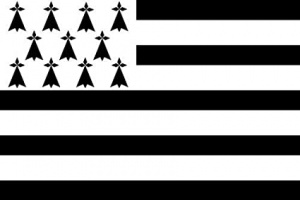Language/Breton/Grammar/Plurals
Hi Breton learners! 😊
In this lesson, we will learn about plurals in Breton grammar. As you might know, plurals are used to indicate that there are more than one of a certain noun. It is an important concept to learn in any language, and understanding how to make plurals in Breton is crucial to speak the language fluently. We will cover regular and irregular plurals, and examples will be provided to help you understand how to make plurals in Breton.
Once you've mastered this lesson, take a look at these related pages: Personal Pronouns, How to Use "Be", Adjectives & How to Use Have.
Regular Plurals (Kuzul Skolid Brezhoneg)[edit | edit source]
In Breton grammar, most regular plural nouns are formed by adding -où or -ioù to the singular noun. Whether to use -où or -ioù depends on the last letter of the singular noun. If the singular noun ends in a vowel, add -ioù, otherwise, add -où.
Examples:
| Breton | Pronunciation | English |
|---|---|---|
| kazh | /kaz:/ | cat |
| kazhioù | /kazˈjuː/ | cats |
| ki | /ki:/ | dog |
| kioù | /kjou:/ | dogs |
| pinvidik | /pinvɨdik/ | child |
| pinvidikoù | /pinviˈdju:/ | children |
As you can see, the plural form of a noun can look quite different from its singular form. It is important to memorize these plural forms to use them properly in speech and writing.
Irregular Plurals (Kuzulioù diazez)[edit | edit source]
While most plurals in Breton are formed regularly, there are some exceptions with irregular plural forms. For example:
- "nez" (nose) - singular form; "neiz" (noses) - plural form
- "kaer" (beautiful) - singular form; "kraoñ" (beautiful) - plural form
These irregular plurals in Breton do not follow any specific rule, and the only way to learn them is by memorizing them. Over time, with practice and exposure to the language, you will become more familiar with the various irregular plurals.
Plural Adjectives (An adjectivezhioù pluriel)[edit | edit source]
In Breton, adjectives must agree with the noun in gender and number. Therefore, to form plural adjectives, simply add -où or -ioù to the end of the adjective.
Examples:
- "Gwenn" (white) becomes "Gwennioù" (white - plural)
- "Du" (Black) becomes "Dioù" (black - plural)
Dialogue[edit | edit source]
- Person 1: Plijout a rafec'h ar c'hazhioù pinvidik. (I like children's cats.)
- Person 2: Plijout a ra din ivez! (I like them too!)
Culture Note[edit | edit source]
The Breton language is known for its close association with Celtic culture. According to Wikipedia, Breton is spoken by approximately 200,000 people in Brittany in northwestern France. Breton has survived for centuries despite efforts to suppress the language. Today, it is considered one of the six Celtic languages still spoken in Europe.
To improve your Breton Grammar, you can also use the Polyglot Club website. Find native speakers and ask them any questions!
Sources[edit | edit source]
➡ If you have any questions, please ask them in the comments section below.
➡ Feel free to edit this wiki page if you think it can be improved. 😎
Other Lessons[edit | edit source]
- Gender
- How to Use Be
- Negation
- Give your Opinion
- Adjectives
- Pronouns
- Future Tense
- Personal Pronouns
- How to Use Have

